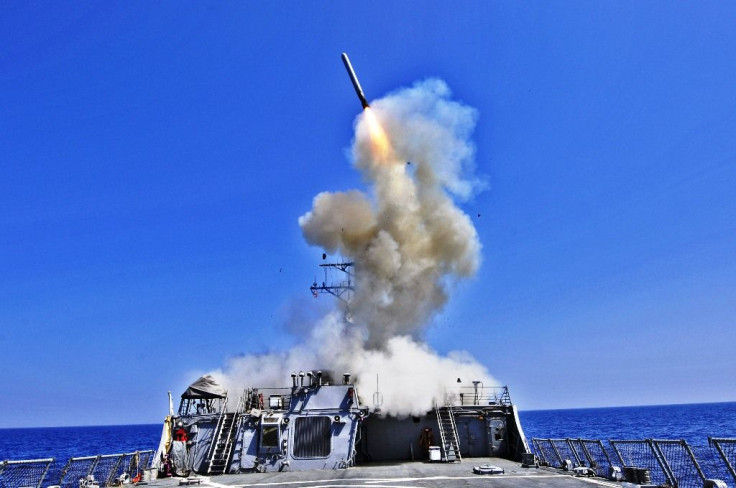South China Sea Tensions Rise: China Accuses US Warship Of 'Intruding Into Chinese Territory Waters'

The accusation by the Chinese military that the American guided-missile destroyer USS Barry has “intruded into Chinese territory waters” near the Paracel Islands, seems perfectly valid from the perspective of Beijing’s expansive claims in the strategic waterway. According to China, almost all the South China Sea is under its sovereignty so any vessel sailing anywhere in the sea could be considered an intrusion.
Calling it a “provocative act” the People’s Liberation Army’s (PLA) Southern Theater Command said the USS Barry entered into “waters around the Paracel Islands without permission” Tuesday (April 28), prompting the command to scramble air and sea patrols to “track, monitor, verify, identify and expel” it.
Li Huamin, a PLA command spokesman, said, “These provocative acts by the U.S. side … have seriously violated China’s sovereignty and security interests, deliberately increased regional security risks and could easily trigger an unexpected incident. [The acts] were incompatible with the current atmosphere as the international community is fighting pandemic … as well as the regional peace and stability.”
The comments were posted on WeChat, a Chinese social media platform.
The difficulty with China’s claims in the South China Sea is that the overwhelming majority of international legal experts have concluded they are invalid. China uses an artificial and ambiguous demarcation line called the Nine-Dash Line to mark maritime territory that it believes belongs to them.
The line forms a huge tongue-shaped curve beginning in the Gulf of Tonkin, west of Hainan. It runs south along the coast of Vietnam with the tip of the tongue running east toward the coast of Malaysia. It then turns north and runs along the Malaysian coast, past the Philippines and terminates near Taiwan.
The swath of sea enclosed by the Nine-Dash Line encroaches on the exclusive economic zones (EEZs) of Vietnam, Brunei, Malaysia, the Philippines and Indonesia -- including many island chains and islets that dot the waters. In 2016 the United Nations Permanent Court of Appeals ruled in favor of the Philippines over waters near the Spratly Islands, but China has simply ignored the ruling.
The Paracels are 30 small Islands controlled by China but also claimed by Vietnam and Taiwan. China might be able to bolster its claim over some of the islands as they are geographically closer to Hainan, with only a small cluster closer to Vietnam’s coast.
The publicized role of the United States is to maintain a balance of power in the area and ensure a safe passageway for vessels through the international waterway. It would be naïve to think that the U.S. does not have other interests, but with no territorial claims, it will need to continue using one of the other Asian countries as a proxy for those goals.
As is usually the case, words are exchanged over any South China Sea event where the U.S. and China are at odds. Defense Secretary Mark Esper criticized Beijing for failing to share information about the pandemic while Beijing accused Washington of dismissing China’s efforts to control the contagion.
Both governments have made errors and misjudgments over their handling of the coronavirus but instead of working jointly to defeat the pandemic, both sides seem intent on increasing their military presence in the Taiwan Strait, as well as the South and East China seas.
© Copyright IBTimes 2025. All rights reserved.





















